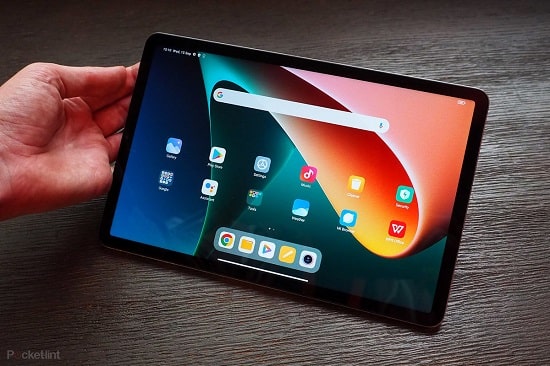News
First Impressions of the Xiaomi Pad 5: Built to Perform

Once again, Xiaomi is getting its tablet business going again in India with the Pad 5, which has been out for a while now. This tablet has more features than most in its class because it has a high-resolution screen, a powerful processor, and even Xiaomi’s Smart Pen. There are, however, a few things that might not be important to everyone.
The Xiaomi Pad 5 looks better than the first Mi Pad (Review). It has a metal frame between the screen and the back panel, made of polycarbonate. The whole thing feels very strong. Magnetically, the Xiaomi Smart Pen can be stored and charged on the tablet’s top edge. The Xiaomi Pad Keyboard connects to the tablet’s contact pins on the bottom. Both of the accessories must be bought on their own.
On the Xiaomi Pad 5, the screen on the back is 11 inches wide and has a resolution of 1,600 x 2,560. It has a 120Hz refresh rate that makes the UI look very smooth. The screen is also HDR10+ and Dolby Vision certified, which means it can show better contrast and colors when you watch compatible content. The 10-bit screen also has a brightness level of up to 650 nits. Adding to the list of certifications is the quad-speaker setup that can play Dolby Atmos music.
The Xiaomi Pad 5 comes in two different storage sizes. The 128GB version costs Rs. 26,999, and the 256GB version costs Rs. 28,999. You can buy both for that price. There is 6GB of RAM in both storage variants and no way to add more storage space.
There is a Qualcomm Snapdragon 860 SoC in the Xiaomi Pad 5. It looks old, but it should be good enough for the tablet’s work and entertainment needs. It’s a shame that the Pad 5 doesn’t have a cell version, so you’ll have to use Wi-Fi to connect to the Internet. The tablet also has Bluetooth 5 and a USB Type-C port with an OTG adapter. In this case, there isn’t a fingerprint reader, so users can only use the 2D facial recognition system or the old-fashioned passcode to keep their information safe.
There are a lot of tablet-friendly features in MIUI 13, which runs on the Xiaomi Pad 5. This means that you can have apps run in floating windows. Android 11 is used as the base for MIUI 13. The interface is very customized, but it worked well when I tried it out for the first time.
The Xiaomi Pad 5 has a battery that can charge quickly with the 22.5W charger that comes with it. The Xiaomi Pad 5 can charge up to 33W, but you’ll need to buy the charger separately. The Pad 5 also comes with a 13-megapixel rear camera and an 8-megapixel front-facing camera, both of which are on the back.
There was a big difference between Xiaomi’s Pad 5 and the first Mi Pad in India. However, the Xiaomi Pad 5 is in a different price range. Competition for the Pad 5 comes from both Samsung and Lenovo. It competes with Samsung’s Galaxy Tab A8, Galaxy Tab S7 FE (Review), Lenovo’s Yoga Smart Tab, and the more expensive Tab P11 Pro (Review).
I will put the Xiaomi Pad 5 through its paces to see if its software and accessories make it a good productivity tool and a suitable entertainment device like the other tablets in its class, like the iPad. Check back soon for my full review.














You must be logged in to post a comment Login